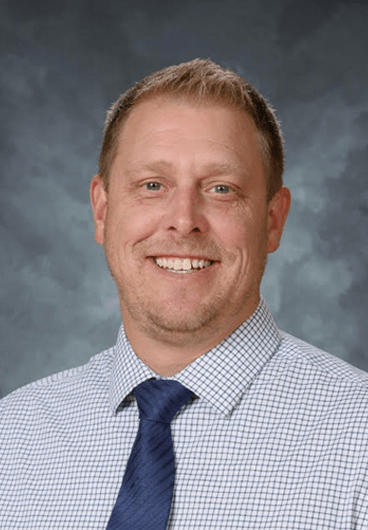
Josh Kitzman
Edison and John Hoeven Warren Elementary Schools
Minot, North Dakota
Josh.Kitzman@minot.k12.nd.us
Best Practices
1) Student Assessments: Student assessments at Edison and John Hoeven Elementary School have been becoming more and more successful over the past few years. Our district has become more data-informed in its practices over my time here, and my schools have worked to get out in front of this movement. The staff at both schools understand the need to become more knowledgeable about our students in more specific ways to differentiate our instruction to help them grow.
We use Standards Referenced Grading in math and science at this point. Many of our teachers have embraced this very different way of grading simply because the assessments are much more focused, and they can understand specific areas in which their students are struggling. In math, we have interventionists who work with students in fluid groups based on their assessments and progress toward each standard.
At John Hoeven Elementary, we also group students in their grade level based on their current skills and ask them to “walk to learn” with different teachers and kids who also are learning at their skill level. This has been a very helpful practice, and our teachers have been excited to continue tweaking it to make it work the best way possible for our students.
In our MTSS processes at each school, our goal is to get to know exactly where the gaps are in our struggling students. When we have an academic concern, we use different reading inventories to determine if the deficit in the student’s learning lies in phonics, phonemic awareness, fluency, etc. We then try to tailor their intervention based on those assessment results. I don’t know if there will ever be a perfect MTSS process in any school, but we feel like through our processes we are getting to know our students better each year.
Finally, our district-wide assessments are used for our school goals. More important, our students use their previous scores to goal set to improve their scores on the next assessment. This has created rich discussions in the classroom between students and their teachers about what they need to do to improve. It also helps students advocate to the teacher what they need to be successful.
2) Parent and Community Relations: Parent and Community Relations have been a highlight of my work at both schools throughout my nine years as an assistant principal. I have worked diligently to maintain strong relationships with my families through frequent contact when there have been concerns as well as when there have been celebrations.
My schools have done many to things to continue to improve our image and relationships in the community. Through COVID at Edison, we did community parades with our teachers, which morphed into a “reverse parade” for our veterans on Veterans Day and a music program that we perform for them. We are the Edison Sparks, so we hand out Spark Slips and Glow Notes. A Spark Slip is a form filled out for a student when they are “caught being good.” They bring it to the office and receive recognition from office staff and write their name on a 100’s chart, and then they take the slip home to their families. If a student is seen being consistently excellent around the school or if they do something that is outstanding on its own, they can be recognized with a Glow Note. The student then brings that to the office where they get a glow in the dark necklace, put their name on a big poster of our mascot in the hallway, and the principal calls home to further recognize their behavior. All those things improve our relationships with our families.
At Hoeven, we do many of the same types of initiatives to recognize our students and assure our parents that we see all the great things our students are doing. In addition, we are currently planning a “Spring into Summer” family involvement night, where we will invite different community organizations that offer activities during the summer for our students and families. The idea is to have an “activity fair” set up for parents with informational booths around the school where families can get information about activities offered by our community partners that can engage our students in learning and building background knowledge and experiences during the summer with their families. We will then have a movie playing in the gym where families can simply enjoy an evening with each other, network with other families in our school community, and interact with our staff to further strengthen our bonds with our families and community partners.
In addition to all the activities designed to enhance parent and community relations (we have so many examples at both schools), my staffs have rich conversations through professional development opportunities offered by our district. Often in other schools that I’ve been a part of or heard of, discussions about how to truly engage parents and community organizations can be surface level. I believe that both Edison and Hoeven staff have embraced the challenge and importance of continually developing and nurturing our relationships with families and our community as another tool to help our students grow. When we talk about this concept, our staff is actively engaged, thinking, and planning ways to continue to improve. I like to think that over the years as I’ve led different discussions and professional development opportunities for our staff that I’ve helped to influence my schools in a positive way that has led our schools to be such welcoming, engaging environment for our students, families, and community.
We still have things to learn, to investigate, but I feel like my schools are doing excellent work with getting to know where our students have gaps through our assessment practices.


